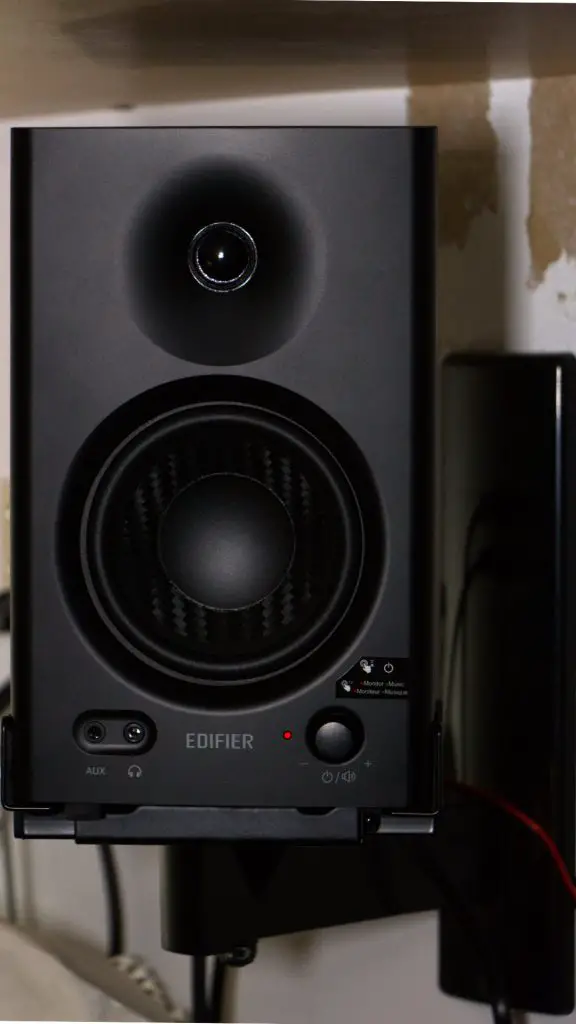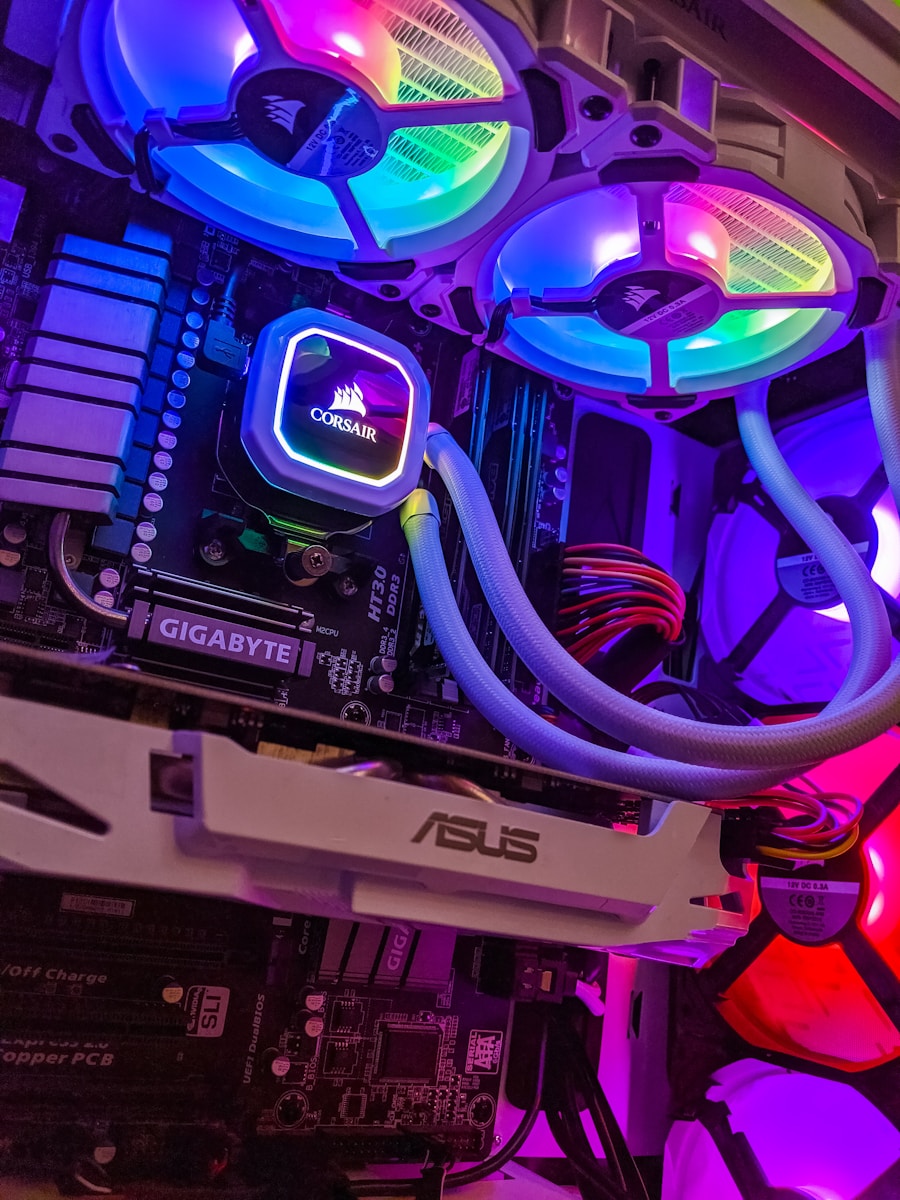Is it possible to have both accuracy AND affordability?
Well, that’s what I promise to deliver in today’s article! We’ll be taking a look at the 4 best studio monitors for music production and sound design.
Of course, you can most likely find “better” if you have the budget for it.
However, you’d be surprised to find out how good these studio monitors perform when compared to some of the “higher tier” options on the market.
If anything, you’ll learn WHAT you should be spending more money on.
All of that and so much more, coming right up…
- What you need to know BEFORE purchasing studio monitors
- 1. PreSonus Eris E3.5 Studio Monitors
- 2. Edifier MR4 Studio Monitors
- 3. KRK Rokit 5 Studio Monitors
- 4. Fluid Audio FX8 Studio Monitors
- Summary: 4 Best Studio Monitors for Music Production and Sound Design
What you need to know BEFORE purchasing studio monitors
I’ll keep it simple… You only really need to know TWO things.
- Where you’ll be placing your studio monitors
- What kind of music/sounds you’ll be working with
It may not be obvious to most people, but you CAN’T just place your studio monitors anywhere. The placement of your studio monitors is SUPER IMPORTANT.
Come to think of it, the acoustics of your room are just as important.
We won’t be talking much about that today, so you can read THIS post for more info.
I’ll be recommending some speaker mounts/stands you can think of purchasing later.
For now, just understand that your studio monitors need to be at approximately the same height as your ears. Here’s what it looks like in my control booth…

The other thing to keep in mind is the type of music/sounds you’ll be working with. To be more specific, it’s the “bass-heavy” stuff that needs more consideration.
For example, you’ll need a different pair of studio monitors if you’re making EDM and/or cinematic music. However, you’ll be able to use these for everything else!
The one disadvantage… These types of studio monitors are more expensive.
Why? It has to do with the SIZE of the driver/woofer.
Small studio monitors (5” and below) usually cannot produce sub-bass frequencies.
It’s not the end of the world for most things, but it’s very important whether you need to go for a pair of medium-large studio monitors from the start.
Of course, getting a good sub-bass response in an untreated room can also be an issue…
That’s why I still prefer working with studio headphones most of the time!
1. PreSonus Eris E3.5 Studio Monitors
Okay, so we’re starting off with my first pair of legitimate studio monitors!
I recently sold them, but they served me well for over a year. Of course, I’m talking about the PreSonus Eris E3.5.
Here’s what you can expect from them…
- Driver/Woofer: 3.5″
- Tweeter: 1″ (silk)
- Frequency Response: 80Hz – 20,000Hz
- Power Amp: 25W
- Onboard EQ: Yes, 2-Band
- Balanced TRS Inputs: Yes
- Balanced XLR Inputs: No
- Unbalanced RCA Inputs: Yes
- Headphone Output: Yes
- AUX Output: Yes
The PreSonus Eris E3.5 also has a model with Bluetooth functionality. There are also other models in the Eris-series that go up in driver/woofer size!
I was personally surprised to find out how good these studio monitors sounded.
Of course, you’ll be missing out on some of that low-end because of the 3.5” drivers/woofers, but it works out for most popular genres of music.
Do I still recommend the PreSonus Eris E3.5?
If I had to choose between the PreSonus Eris E3.5 and the Edifier MR4 (the next studio monitor on our list), I’d have to go with the MR4.
If anything, I’d just go with the PreSonus Eris E4.5 and/or other models in the series.
2. Edifier MR4 Studio Monitors
So, Edifier recently sent me a pair of their latest MR4 studio monitors.
If you’re wondering what ended up replacing my PreSonus Eris E3.5, this is it!
Here’s what it’s got under the hood…
- Driver/Woofer: 4″
- Tweeter: 1″ (silk)
- Frequency Response: 60Hz – 20,000Hz
- Power Amp: 21W
- Onboard EQ: Yes, 2-Band
- Balanced TRS Inputs: Yes
- Balanced XLR Inputs: No
- Unbalanced RCA Inputs: Yes
- Headphone Output: Yes
- AUX Output: Yes
The slightly larger driver/woofer size gives us an additional 20Hz of low-end. However, it still doesn’t grant us access to the realm of sub-bass.
Still, the low-end response is tight and sounds well-balanced with the highs.
I kind of feel like Edifier was specifically trying to compete with the PreSonus Eris E3.5 because both of these studio monitors are nearly identical.
Of course, Edifier did include an additional feature which allows you to switch between “monitor” and “music” mode. To my ear though, they sound the same.
Do I recommend these? If you’re looking for the most affordable studio monitor with the best value, you can’t go wrong!
3. KRK Rokit 5 G4 Studio Monitors
Alright, so the KRK Rokit 5 G4 is in another league!
We’re bumping up the price tag, but what you’re getting in exchange is well worth it…
- Driver/Woofer: 5″
- Tweeter: 1″
- Frequency Response: 43Hz – 40,000Hz
- Power Amp: 55W
- Onboard EQ: Yes, Graphic LCD
- Balanced TRS Inputs: Yes
- Balanced XLR Inputs: Yes
- Unbalanced RCA Inputs: No
- Headphone Output: No
- AUX Output: No
One of the most interesting features of the KRK Rokit 5 G4 is the onboard graphic EQ which is powered by DSP. It’s used to get the best out of your speakers depending on your room.
The 5” driver/woofer finally allows us to hear SOME sub-bass frequencies.
Although, that should be plenty for most music producers and sound designers.
I personally believe that the KRK Rokit 5 G4 is the perfect medium-sized studio monitor for home recording studios. However, it is 2-3x the price of what we’ve already covered.
Of course, just make sure you’ve got the proper setup to make your investment worthwhile!
4. Fluid Audio FX80 Studio Monitors
We’re still moving up in size, but actually going down in price!
I was surprised when I found out about the Fluid Audio FX80. They’re actually quite unique in regards to design and have lots of high-end features at a relatively affordable price.
Here’s what you can expect…
- Driver/Woofer: 8″
- Tweeter: 1.2″ (coaxial)
- Frequency Response: 35Hz – 22,000Hz
- Power Amp: Up To 60W
- Onboard EQ: No
- Balanced TRS Inputs: Yes
- Balanced XLR Inputs: Yes
- Unbalanced RCA Inputs: Yes
- Headphone Output: No
- AUX Output: No
Now, one of the most impressive features on the Fluid Audio FX80 is the coaxial design. In layman’s terms, that basically means the tweeter is positioned in the center of the woofer.
It’s optimal because everything is coming from the same point in space!
In other words, the idea is that you’ll have less off-axis colouration depending on where you’re standing in the room.
It also makes the FX80 more compact, especially considering the 8” driver/woofer.
So, it gives us pretty much all the sub-bass we need!
It might be last on the list, but I definitely believe that the Fluid Audio FX80 is the best option on this list. It doesn’t have an onboard EQ like the KRK Rokit 5 G4, but that’s about it.
If you have an acoustically treated room, I’d definitely go for the Fluid Audio FX80!
Summary: 4 Best Studio Monitors for Music Production and Sound Design
If you need to compare all of the studio monitors we looked at today, you can consult this table…
| PreSonus Eris E3.5 | Edifier MR4 | KRK Rokit 5 G4 | Fluid Audio FX80 | |
| Driver/Woofer | 3.5″ | 4″ | 5″ | 8″ |
| Tweeter | 1″ | 1″ | 1″ | 1.2″ |
| Frequency Response | 80 – 20,000Hz | 60 – 20,000Hz | 47 – 40,000Hz | 35 – 22,000Hz |
| Power Amp | 25W | 21W | 50W | Up To 60W |
| Onboard EQ | Yes, 2-Band | Yes, 2-Band | Yes, Graphic LCD | No |
| Balanced TRS Inputs | Yes | Yes | Yes | Yes |
| Balanced XLR Inputs | No | No | Yes | Yes |
| Unbalanced RCA Inputs | Yes | Yes | No | Yes |
| Headphone Output | Yes | Yes | No | No |
| AUX Output | Yes | Yes | No | No |
I hope that you now have a thorough understanding of what it is we’re looking for in a good pair of studio monitors.
Of course, you can always pay more for the “bells and whistles”, but do you really need ‘em?
My selection of the 4 best studio monitors for music production and sound design was based on affordability but more importantly, on performance.
I definitely recommend the Edifier MR4 if you’re looking to get your feet wet.
The KRK Rokit 5 G4 can easily be found second-hand on Ebay, Facebook Marketplace, etc…
However, I’m 100% going to recommend the Fluid Audio FX80 if you’ve got the budget for it. Considering what you’re getting, it’ll definitely pay for itself in the long run.
So, that’s it! What do you think is the best studio monitor for music production and sound design? Let us know in the comments and feel free to ask any questions there as well.
Sources
https://www.presonus.com/products/Eris-E35
https://edifier-online.com/us/en/speakers/mr4








